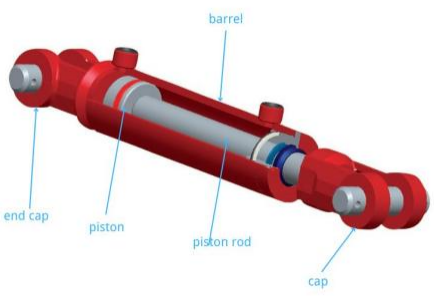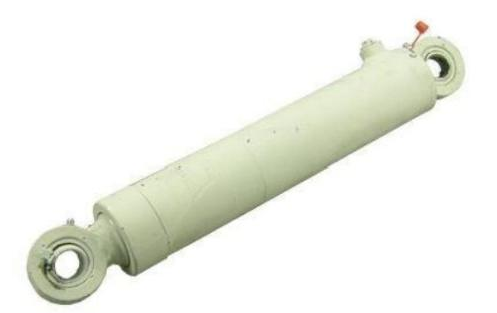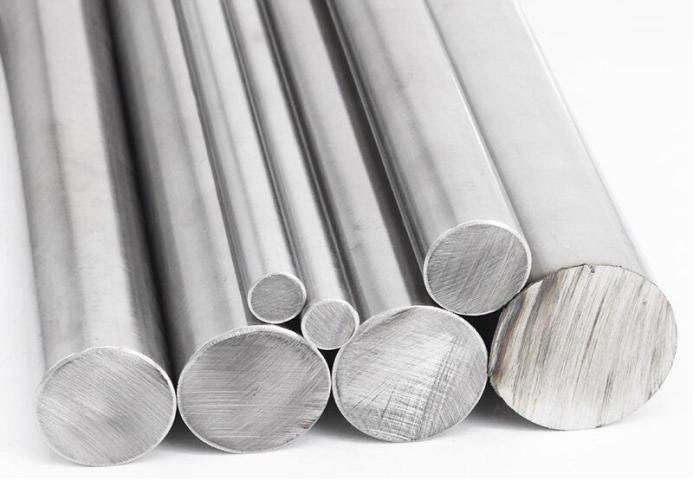Welded hydraulic cylinders are a type of hydraulic actuator designed to generate force in a straight line, either for pushing or pulling. These cylinders consist of a cylindrical barrel within which a piston, connected to a piston rod, moves back and forth. The movement is driven by pressurized hydraulic fluid, usually oil. What distinguishes welded cylinders is their construction: the ends of the cylinder barrel are welded directly to the barrel, and the ports are also welded to the barrel. This design contrasts with other types, such as tie-rod cylinders, where the ends are secured using tie-rods.

1.Barrel: The central component of the cylinder that contains the piston and the hydraulic fluid.
2.Base (or Cap): One end of the cylinder, into which the barrel is welded.
3.Piston: A disc or short cylinder that fits closely inside the barrel and moves under hydraulic pressure to produce motion.
4.Piston Rod: The rod extending from the piston through the rod-end of the cylinder, translating the linear motion from the piston to the machine part performing the work.
5.End Cap (or Rod End): The end of the cylinder from which the piston rod protrudes.
At the core of a welded hydraulic cylinder is the piston, which moves within the barrel. When hydraulic fluid, typically oil, is pumped into one side of the cylinder, it exerts pressure on the piston, causing it to move. This movement can either extend or retract the piston rod, depending on which side of the piston the fluid is introduced. The motion is smooth and controlled, enabling precise operations across a wide range of applications.
The hydraulic fluid serves as the lifeblood of the cylinder, not only transferring force but also lubricating the moving parts, reducing friction, and dissipating heat. Its incompressibility makes it an ideal medium for efficiently converting hydraulic pressure into mechanical work. As the fluid is pushed into the cylinder, it drives the piston and, consequently, the piston rod, transforming the hydraulic energy into mechanical action.
1.Construction: In the construction industry, welded hydraulic cylinders are utilized in heavy machinery such as excavators and bulldozers. For example, in an excavator, these cylinders control the movement of the boom, arm, and bucket, facilitating digging, lifting, and the precise placement of materials.
2.Manufacturing: In manufacturing, these cylinders are frequently employed in automated production lines. They might be used in a press machine, for instance, to mold or shape parts with high precision and force.
3.Agriculture: Agricultural machinery, including tractors and combines, heavily relies on welded hydraulic cylinders for various tasks, such as lifting heavy loads and operating complex machinery attachments.

1.Construction: These cylinders feature one port for hydraulic fluid entry, which moves the piston in one direction. A spring or external force is used to return the piston to its original position.
2.Application: Ideal for applications where the return stroke does not carry a load, such as in vehicle hoists.
3.Advantages: Simplicity and lower cost.
4.Disadvantages: Limited to applications where the return stroke is not under load.
1.Construction: These cylinders are equipped with two ports for hydraulic fluid, one on each side of the piston, allowing for controlled movement in both extending and retracting directions.
2.Application: Commonly used in construction machinery, manufacturing equipment, and any application that requires force in both directions.
3.Advantages: Versatility and precise control in various applications.
4.Disadvantages: More complex and expensive compared to single-acting cylinders.
1.Construction: These are multi-stage units with several cylinders nested inside each other, extending in a telescopic manner.
2.Application: Used in applications requiring a very long stroke from a compact initial form, such as in dump trucks and large lifting applications.
3.Advantages: Extended reach capability while maintaining a compact form.
4.Disadvantages: More complex design and maintenance.
1.Customized Cylinders: Designed for unique applications with specific requirements, such as size constraints, special materials, or unusual pressure ratings.
2.Rotary Actuator Cylinders: Combine linear and rotational movement, useful in steering mechanisms or where rotational movement is required.
3.Load-Holding Cylinders: Equipped with specialized valves and components to safely hold heavy loads for extended periods.
1.Definition: The internal diameter of the cylinder barrel.
2.Implications: A larger bore size means the cylinder can generate more force, but it also requires more fluid and may reduce the system’s overall efficiency. This is suitable for heavy lifting and high-force applications.
3.Expert Insight: The selection of bore size should balance the required force with system efficiency.
1.Definition: The distance the piston travels inside the cylinder.
2.Implications: It determines the range of movement of the cylinder. Longer strokes are beneficial for applications requiring extensive movement but may compromise stability and increase the risk of buckling.
3.Industry Standards: Optimal stroke length should consider the application’s spatial constraints and movement requirements.
1.Definition: The thickness of the piston rod.
2.Implications: Thicker rods can withstand higher loads and lateral forces but may increase the cylinder’s overall size and reduce its efficiency. This is essential for applications where the piston rod is subject to significant load or stress.
3.Case Study: In construction equipment, thicker rods are chosen for their ability to withstand the rigors of heavy-duty use.
1.Definition: The maximum operating pressure the cylinder can safely handle.
2.Implications: Higher pressure ratings allow for smaller cylinders to be used for the same force output. However, this may require stronger materials and result in higher costs.
3.Expert Opinion: Selection should align with the hydraulic system’s pressure capabilities and the application’s force requirements.

1.Common Materials: Steel, stainless steel, and aluminum.
2.Considerations:
Steel: Offers strength and durability;Stainless Steel: Provides corrosion resistance;Aluminum: Offers a lightweight option.
3.Expert Opinion: The choice of material should consider the operating environment, such as exposure to corrosive substances or extreme temperatures.
1.Importance: Seals prevent fluid leakage and contamination, which is crucial for maintaining efficiency and longevity. Coatings protect against wear, corrosion, and environmental damage.
2.Types:
Seal Materials: Polyurethane, Nitrile, and PTFE are common;
Coatings: Chrome plating and nitriding are popular for rods.
3.Testimonials: Many manufacturers report extended cylinder lifespans and reduced maintenance needs due to high-quality seals and coatings.